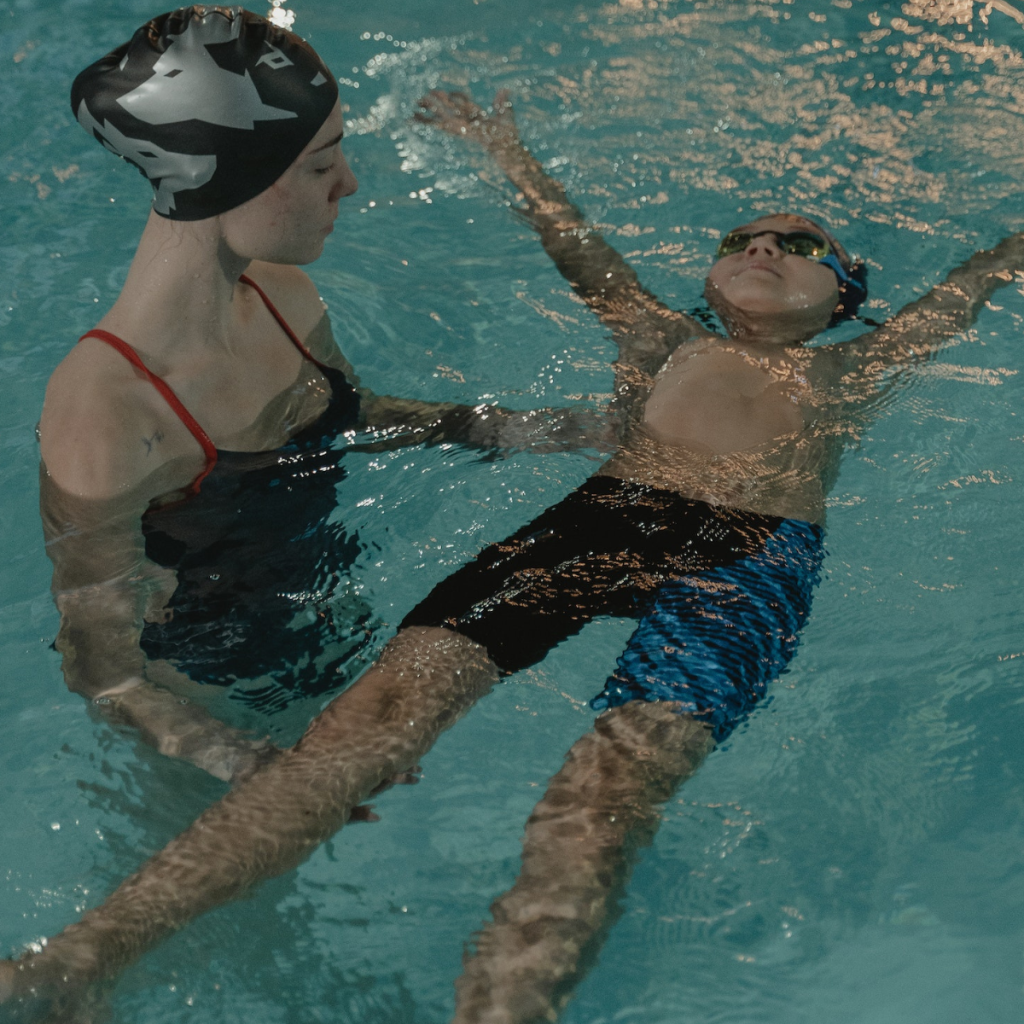Discover effective strategies and techniques for teaching swimming to 8-9 year old children.
How to Teach Swimming to 8-9 Year Old Children
If you have a group of energetic 8-9 year olds and a pool full of water, then you have the perfect ingredients for a swimming adventure! Teaching children how to swim in this age range can be a rewarding and fun experience for both the instructor and the little water enthusiasts. In this article, we will explore the various techniques and strategies to make swimming lessons a splashingly good time. So let’s dive in and discover how to become a swimming instructor extraordinaire!
Understanding the Basics of Swimming
Before we jump right into the pool, let’s take a moment to discuss the fundamental aspects of swimming. It’s important to begin by emphasizing the significance of water safety. Safety should always come first, and children need to understand the do’s and don’ts of being in and around the water.
Swimming is not only a fun and refreshing activity, but it is also a life skill that everyone should learn. By teaching children the basics of swimming, we are equipping them with the ability to enjoy water activities safely and confidently.

The Importance of Water Safety
This is the cardinal rule of swimming. Teach children basic water safety measures like never swimming alone, staying within designated areas, and always having an adult present. Make sure they know how to float and tread water, and reinforce the importance of looking out for themselves and their swimming buddies.
Additionally, it’s crucial to educate children about the potential hazards of swimming in open water such as rivers, lakes, and oceans. These environments can be unpredictable, with strong currents and hidden dangers. By instilling a strong sense of water safety, you’ll equip these young learners with the knowledge they need to stay safe in and around the water.
Furthermore, it’s important to teach children about the importance of sun protection while swimming. Applying sunscreen, wearing a hat, and using protective clothing are essential to prevent sunburn and long-term skin damage.
Essential Swimming Skills for Children
Now that we have safety locked down, let’s move on to the exciting part – the actual swimming skills! Children at this age are usually ready to learn the basics of various swimming styles. Each child might have their own pace of progress, but it’s important to cover the three basic swimming strokes: freestyle, backstroke, and breaststroke.
Freestyle, also known as front crawl, is the most common and fastest swimming stroke. It involves alternating arm movements and a flutter kick. Backstroke, on the other hand, is performed while lying on the back, with alternating arm movements and a flutter kick. Breaststroke is a slower stroke that involves a frog-like arm and leg movement.
In order to help them master these strokes, break down each movement into smaller, more manageable steps. Gradually introduce the different arm and leg movements and show them how to synchronize them. Remember, learning to swim is like learning to dance in the water!
Aside from the strokes, it’s important to teach children other essential swimming skills such as floating and diving. Floating allows swimmers to rest and regain their energy in the water, while diving is a thrilling activity that requires proper technique and awareness of the water depth.
Furthermore, introduce children to basic water rescue techniques. Teaching them how to assist someone in distress and how to call for help in an emergency can potentially save lives.
Swimming is not only a physical activity but also a mental one. It teaches children discipline, perseverance, and the importance of setting goals. Encourage them to challenge themselves and celebrate their achievements, no matter how small.
Remember, swimming is a lifelong skill that can bring joy, health, and safety to individuals of all ages. By providing children with a solid foundation in water safety and swimming skills, we are setting them up for a lifetime of aquatic adventures and well-being.
Preparing for the First Swimming Lesson
Now that we have the basics under our swimming caps, it’s time to dive into the pool and get ready for that first lesson. Preparation is key, so let’s make sure we have everything in place.
Choosing the Right Swimwear
Encourage children to wear proper swimwear that allows freedom of movement. This means no baggy shorts or loose clothing. Opt for snug-fitting swimwear that ensures comfort and ease of movement. Plus, let’s be honest, colorful swimsuits and funky trunks make swimming even more delightful!
When choosing swimwear, consider the material as well. Look for swimwear made of quick-drying fabric that is resistant to chlorine and UV rays. This will not only keep your child comfortable but also protect their skin from harmful sun rays and pool chemicals.
Additionally, it’s important to ensure that swimwear is age-appropriate. For younger children, consider swim diapers or swim pants to prevent any accidents in the pool. For older children, swimsuits with adjustable straps or drawstrings can provide a better fit and prevent any wardrobe malfunctions during swimming lessons.
Building Confidence in Water
Some children may feel a little anxious about their first swimming lesson. Building confidence is vital in these situations. Start by introducing them to the water gradually. Begin with shallow areas and slowly progress to deeper sections. Give them plenty of time to get comfortable with the sensation of being in the water.
Before the first lesson, you can engage your child in water play activities to help familiarize them with the water. This can include pouring water over their hands, splashing water on their face, or even blowing bubbles in the water. These activities not only help them get used to the water but also make it a fun and enjoyable experience.
During the first lesson, it’s important to provide constant reassurance and support. Be patient with your child and let them take their time to adjust. Remember, every child learns at their own pace, and it’s crucial to create a positive and supportive environment for them.
Use positive reinforcement and lots of encouragement to help boost their confidence. Praise their efforts, no matter how small, and celebrate their achievements. Let them know that it’s okay to make mistakes and that swimming is all about having fun!
As they progress through swimming lessons, consider enrolling them in water safety classes as well. These classes teach essential skills such as floating, treading water, and basic rescue techniques. Knowing these skills can further enhance their confidence in the water and ensure their safety.
Remember, the first swimming lesson is just the beginning of a wonderful journey. With the right preparation, swimwear, and confidence-building techniques, your child will soon be splashing and swimming with joy!
Teaching Techniques for Different Swimming Styles
Now that our young swimmers are ready to take on the pool, it’s time to teach them the art of swimming! Each swimming style has its own unique techniques, so let’s explore the key aspects of each stroke.

Introducing the Freestyle Stroke
Ah, the classic freestyle stroke! This stroke is all about coordination and rhythm. Start by showing the children how to move their arms in a circular motion while kicking their legs. Encourage them to keep their body position horizontal, just like a sleek dolphin gliding through the water.
As they begin to grasp the basics, introduce them to the concept of bilateral breathing. This technique involves taking a breath every three strokes, alternating sides. Explain how this helps maintain a steady rhythm and allows for efficient oxygen intake.
Remember, practice makes perfect, so be patient and provide constructive feedback to help them refine their technique. Who knows, you might be teaching the next Olympic champion!
Mastering the Backstroke
Lie on your back and float, imagine you are floating in the sky! The backstroke is all about staying calm and relaxed while gliding on your back. Show the children how to kick their legs and move their arms in a continuous and coordinated motion.
Once they have the basic technique down, introduce them to the concept of backstroke starts. Teach them how to push off the wall with their feet, arch their back, and enter the water smoothly. Emphasize the importance of maintaining a streamlined body position throughout the start and the swim.
As they gain confidence, challenge them to swim longer distances on their backs. Who knows, they might even have a chance to count the stars as they effortlessly backstroke across the pool!
Learning the Breaststroke
Time to wiggle like a frog! The breaststroke involves a combination of arm movements, leg kicks, and breath control. Teach children how to glide their arms out in front of them, perform a frog kick with their legs, and take a breath between each stroke.
As they become more comfortable with the breaststroke, introduce them to the concept of the “pull, breathe, kick, glide” sequence. Explain how this sequence helps maintain a smooth and efficient stroke. Encourage them to focus on the timing of each movement and the importance of a strong kick to propel them forward.
Once they have the hang of it, encourage them to coordinate their movements and swim with grace like mermaids and mermen. Remind them to keep their head and neck in line with their body, and to avoid lifting their head too high during the stroke.
Making Swimming Lessons Fun
While learning the technical aspects of swimming is important, let’s not forget the most crucial ingredient – fun! Keep the children engaged and excited about swimming by incorporating games and activities into their lessons.
Incorporating Games into Lessons
Play games like “Marco Polo” or set up an underwater treasure hunt to keep things lively and spirited. Games not only make swimming lessons enjoyable but also help children practice their swimming skills without even realizing it!
Rewarding Progress and Achievement
Nothing motivates children more than a bit of positive reinforcement and recognition. Celebrate their progress by rewarding them with certificates, small prizes, or even a round of applause. Their hard work and achievements deserve to be acknowledged!
Dealing with Common Challenges in Teaching Swimming
Teaching swimming comes with its fair share of challenges, but fear not, for we shall overcome them with a splash of determination and creativity!
Overcoming Fear of Water
Some children might initially feel scared or anxious about being in the water. Be patient, understanding, and supportive. Start by building their confidence in shallow water and gradually progress to deeper areas.
Use visualization exercises, such as pretending to be a sea creature or a superhero, to help distract their fears. Remember, teaching them to conquer their fears will not only benefit their swimming abilities but also their overall resilience in life.
Addressing Lack of Focus or Interest
Children’s attention spans can sometimes waver, especially when faced with the challenges of learning a new skill. To address this, keep activities short, varied, and engaging. Break up the lesson into smaller segments and include a mix of games, drills, and free swimming.
Find ways to make swimming relatable and exciting for them. Talk about their favorite animals that swim or share stories of famous swimmers. This way, you’ll pique their interest and keep their focus locked onto the pool!
So, there you have it – the ultimate guide on how to teach swimming to 8-9 year old children. Remember, teaching swimming is not just about technical skills, but also about building confidence, instilling water safety knowledge, and making it a delightful experience. By following these strategies, you’ll not only help these young swimmers become water pros but also create memories that will last a lifetime. And who knows, one day you might see them racing across the Olympic pool, showcasing the skills you taught them!



